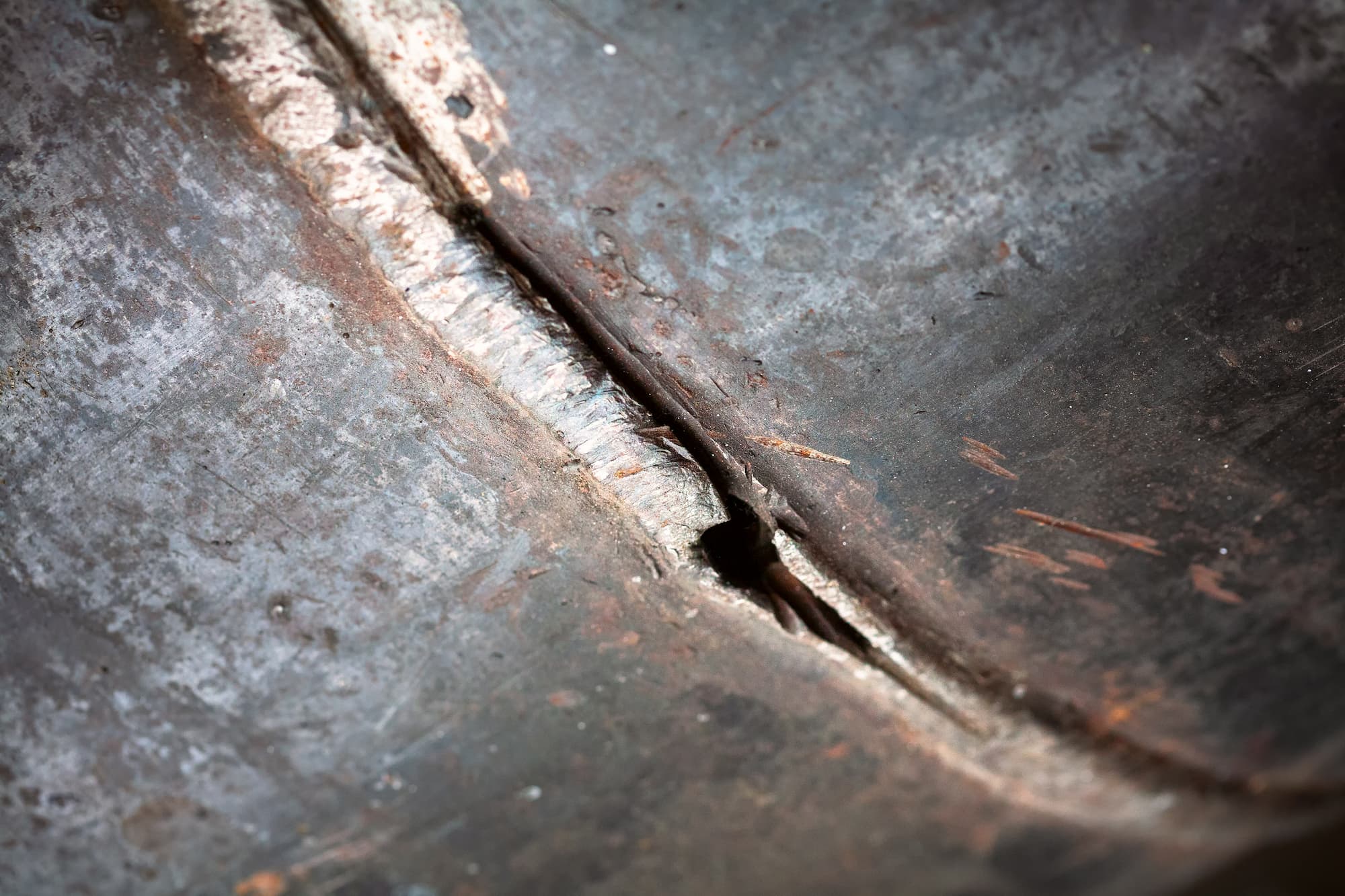Producing high-quality cast parts requires careful mold preparation and casting parameter optimization. Preventing manufacturing defects, including slag inclusion, is a gentle balance of getting the process just right. Understanding common manufacturing defects is the first step in preventing them.
What Are Slag Inclusions?
Slags inclusions are caused by the molten metal flow. This can be from the melting of non-metallic, oxidic components which were present in the metallic charge or formed by means of oxidation during melting of the metal. Slags can also be deliberately created by adding additives to the metallic charge or the already liquid metal.
In either case, the slag itself needs to melt and complete certain metallurgic tasks as a liquid slag cover (slag work). Slag formation increases at low temperatures and starts earlier when there is more oxygen present in the metal (i.e Aluminium or Magnesium). The more time the melt has for oxidation, the more slag is produced by oxides that form.
High-Viscosity Slag
A high-viscosity slag defect is a type of casting defect that results when the molten metal becomes too viscous or thick and cannot flow properly into the mold. This can happen for various reasons, including too high of a temperature, too much impurity in the metal, or too much pressure on the mold.
High-viscosity slag defects can cause problems, including incomplete fill, entrapment of gas pockets, and porosity. In severe cases, it can even cause the mold to break. Because high-viscosity slag defects can’t be spotted during a surface inspection, microstructure analysis is critical for detecting high-viscosity slag inclusion.
What Causes Slag Inclusion?
High temperatures cause most chemical reactions to occur more quickly. Molten metals are no exception. When metal is melted in the presence of oxygen, the oxygen will react with components of the molten metal to form slag and oxides. Any impurities in the mold can also contribute to the formation of slag inclusions. Causes of slag inclusion are often broken into three different categories.
Metallurgical
The quality of the metal itself is critical to prevent slag inclusion. Excessive oxide charge or high impurity levels in materials will lead to excess slag formation.
Pouring Parameters
Pouring temperature and rate are critical for minimizing manufacturing defects. Slow pouring times and low casting temperatures can both lead to increased slag inclusions. Excessive turbulence during the pour also increases the likelihood of slag inclusions.
Mold Properties
Too much inert dust or too low bentonite can lead to slag formation. Oxygen contents in the mold cavity also lead directly to slag inclusions. The surface of the casting mold must also be generally very clean to prevent the formation of slag inclusions during the pouring.
Slag’s Impact on Cast Parts
Slag inclusion should generally be avoided when possible to increase the quality of the cast part. Slag inclusion on the surface of parts diminishes the quality of the casting surface and can make machining difficult. Slag inclusion in the interior of a cast part has a greater impact on the part’s structural characteristics. Internal slag inclusion reduces tensile strength and makes a part more likely to fracture.
Preventing Slag Inclusion
The methods for reducing slag inclusion are also broken into the same three categories.
Metallurgical
Clean, low-impurity source metals are key. Impurities lead to slag inclusions so using materials without impurities is the first place to start. Reducing the elements in the metal alloy that react strongly with oxygen will also reduce slag inclusion. Before use, drying the ladle is also critical. Reducing molten time in the ladle will reduce the likelihood of oxide formation.
Pouring Parameters
By raising the temperature of the casting, slag can be prevented from forming. By shortening pour times, slag is also less likely to form. Slag traps and a full pouring basin will reduce slag inclusion in the cast part. Finally, reducing turbulence in the part prevents internal slag inclusion and oxygen from being mixed into the molten metal.
Mold Properties
Reducing the proportion of inert dust and adding new sand help reduce slag inclusion. Bentonites with higher binding capacity or increased montmorillonite content will also reduce slag formation. Keeping the mold cavity clean is key to preventing defects.
Casting Simulation Leads to Optimization
Time and temperature both affect how much slag is produced during a casting. Optimizing both of those parameters limits the opportunity for the slag to occur. If those parameters are changed, too many new defects may pop up in the cast part, preventing slag but causing new issues.
Simulation technologies like THERCAST® allow for changes in these parameters to be simulated without pouring any metal. By adjusting these parameters in a virtual environment, engineers are better able to optimize the outcome of the actual cast part in a cheaper and faster way.
Metal casting simulation leads to shorter cycle times, higher-quality cast parts, and less wasted material when bringing a new part into production. Slag inclusions’ entrainment can also be simulated with THERCAST®, making it easier to mitigate the risk of inclusions located in the sensitive areas of the part.
Contact Transvalor Americas to learn more.


